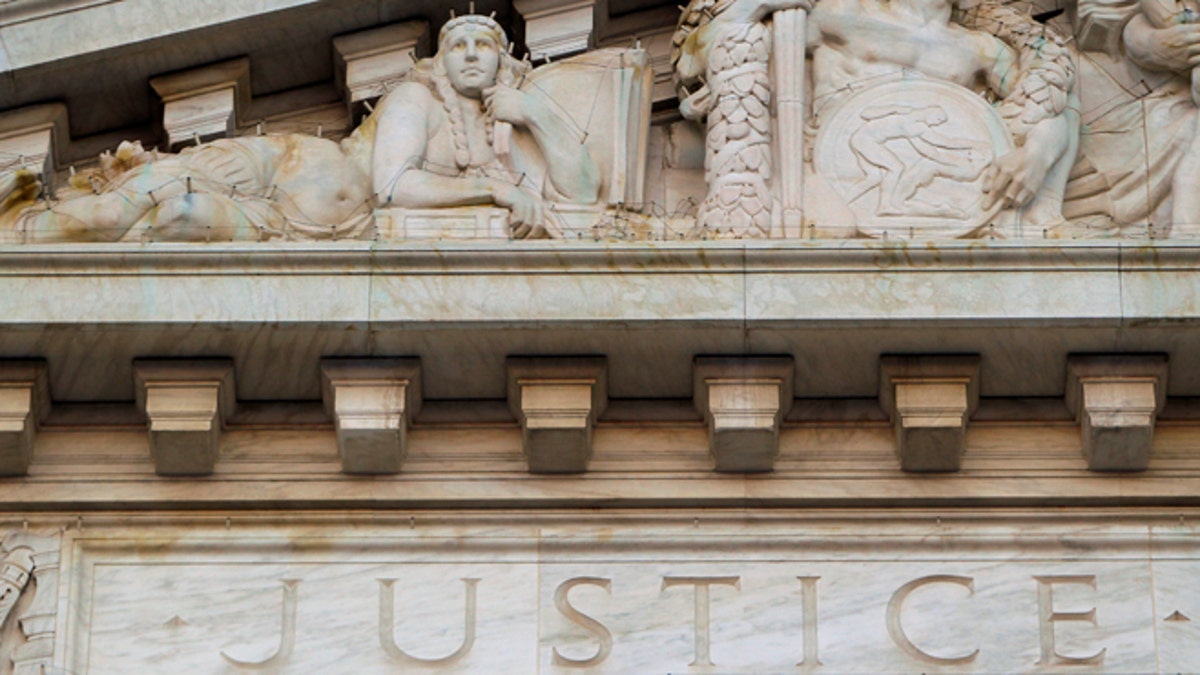
A detail of the United States Supreme Court is seen at dawn in Washington. (Reuters)
At the end of this school year, Saint Jude Educational Institute in Montgomery, Alabama will close its doors forever. The 70-years-old Catholic school announced that it no longer could subsidize its 7th to 12th grade students.
It is a cruel irony that as America celebrates this week the 60thanniversary of Brown v. Board of Education, the landmark Supreme Court case that ruled segregation in public schools unconstitutional, a school located in the heart of the African-American community of the city that was the cradle of the civil rights movement is closing.
It is also an unfortunate reminder that still too few low-income and minority families have high quality educational options for their children.
Alabama is one of only eight states in the country that does not allow charter schools.
Saint Jude played an important role in the civil rights movement. Since it first opened its doors to students in 1938 in the basement of the church, Saint Jude was always geared towards its African-American neighborhood.
In 1965, its grounds were the final stop on the famous march from Selma to Montgomery. Harry Belafonte, Peter, Paul, and Mary, Tony Bennett, Sammy Davis Jr. and many others performed there that night. I know the school history well as I taught there from 2007 to 2009.
Today, the world is somewhat better for African-American families. The Census Bureau tells us that in 1963, the median family income for African-American families was $22,266 (in 2011 dollars). By 2011, it was $40,495. This represents a jump from 55 percent of the U.S. median income in 1963 to 66 percent of the median income in 2011. In 1966, the poverty rate for African-Americans was 41.8 percent. By 2011, it was 27.6. In 1964, only 3.9 percent of African-Americans had completed at least four years of college. By 2012, it was 21.2 percent.
While these numbers are encouraging, there is still much to be done. Education outcomes for African-Americans in the United States are still bleak: The 2013 National Assessment for Educational Progress (NAEP) found that only 17 percent of black 8thgraders were proficient in reading and only 14 percent were proficient in math.
In Alabama, only 9 percent of African-American 8thgraders were proficient in reading and only 6 percent were proficient in math.
In the press release announcing its closure, Saint Jude administrators stated that while the school spent $8,183 per student each year, it only charged $4,800 in tuition.
I know firsthand that many of the school’s students simply couldn’t afford to pay the full rate.
Losing $3,383 annually with each student, and without outside financial aid, it was a just a matter of time (and arithmetic) until the school would be forced to close because of lack of funds. St. Jude is not alone, from 1979 to 2011, the number of Catholic schools in America dropped from 9,640 to 6,841.
A 2013 Census Bureau report states that Alabama spends $9,600 per student per year when capital costs are taken into account.
Looking at these numbers, one has to conclude that the state of Alabama could easily help Saint Jude. By stepping in to bridge the gap between cost and tuition, that is, by paying $3,383 per student to Saint Jude, the state of Alabama would still be saving money.
Last year Alabama passed a small tax credit program to encourage individuals and corporations to donate to organizations which grant scholarships to low income students thus enabling them to attend private schools. A good start, but not enough to stem the tide of closures, or drive the creation of new and better private schools.
Shy of supporting private schools, the state does have other opportunities (as do other states across the country) to increase the number of schooling options for low income and minority families.
Alabama is one of only eight states in the country that does not allow charter schools. As a result, class after class and now generation after generation of students are simply being churned through a centralized, standardized system which does not meet their needs.
It has been said by some that education is the civil rights issue of our time. Sixty years after the Kansas case of Brown v. Board of Education, students may no longer be segregated but education opportunities are unequal.
Policymakers should help struggling schools survive and encourage new schools to open. Until they do, cases like Saint Jude will continue to happen, and the promise of Brown will remain unfulfilled.
